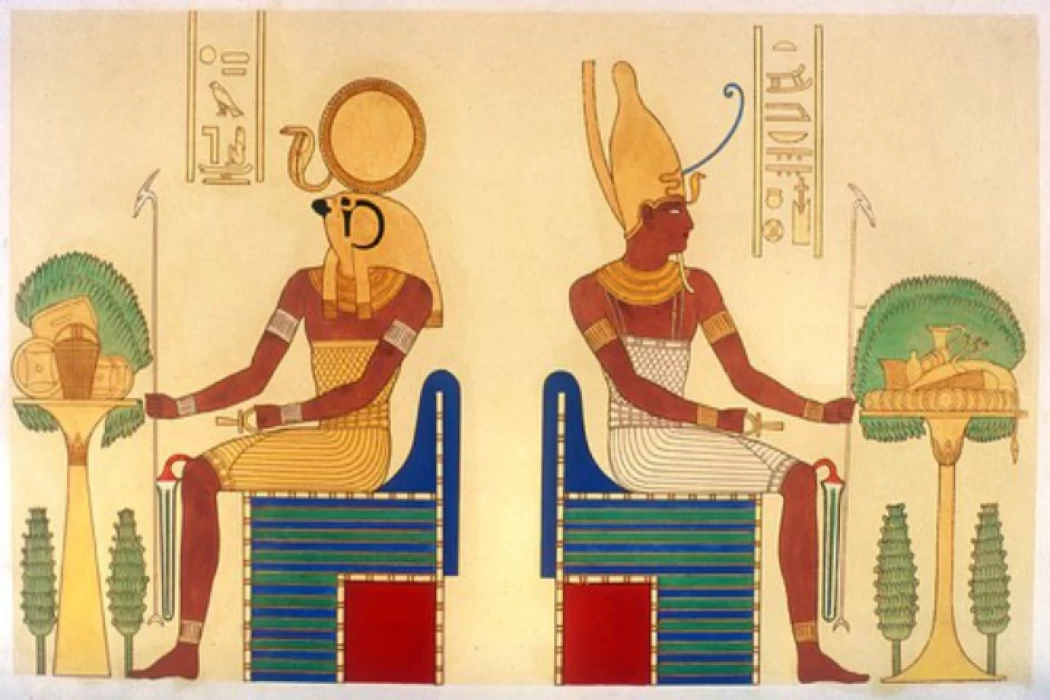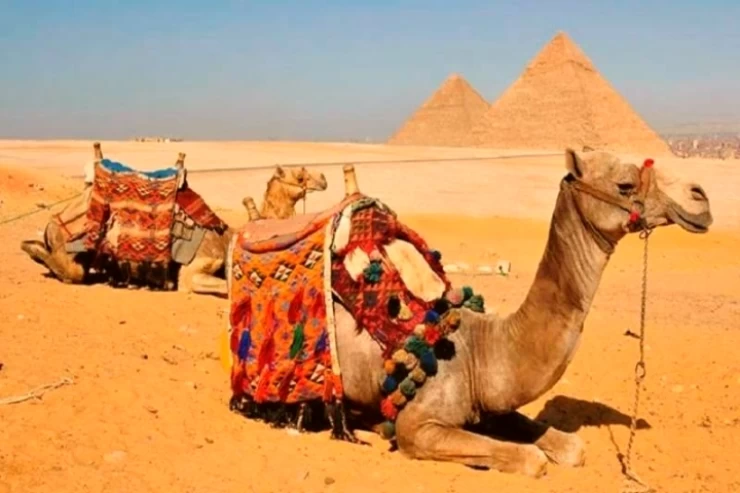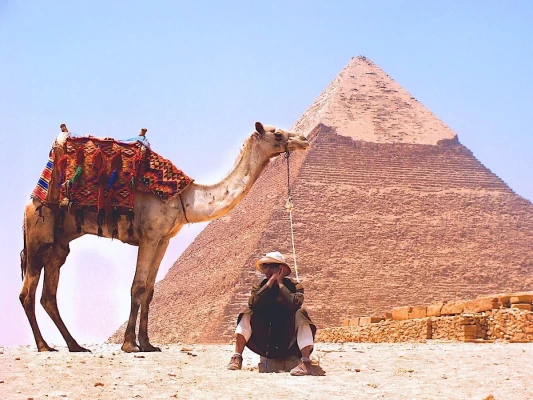
Dio Atum
Dio Atum
God Atum è una delle nove divinità principali della città egiziana Heliopolis, e una delle divinità egizie più importanti in questa mitologia, questo perché è il creatore dell'universo, Atum è anche conosciuto come Atem, Itemu, Atum-Ra o Tem.
Nella mitologia egizia la sua origine è descritta come l'emergere di un dio che proviene dall'oceano originale, che esisteva prima della creazione, Atum era colui che avrebbe iniziato la creazione, dato che diede vita ai suoi due figli Shu e Tefnut, che erano gli dei rispettivamente di aria e umidità.
Gli antichi egizi lo rappresentavano come un uomo barbuto, che indossava una doppia corona. Atum è stata la prima divinità egizia ad essere rappresentata in forma umana, poiché è stato lui a sostituire Imy-uaf, un dio serpente. Dopo questo, Atum inizia la sua opera di creazione.
Quando era rappresentato nella sua forma di dio solare, indossava una testa di ariete, fenice o mangusta, in altre occasioni lo rappresentavano sotto forma di serpente, che usciva dalle acque primordiali e si rinnovava ogni giorno.
Essendo anche considerato un dio solare, era imparentato con il dio Amon Ra, che era il dio del sole, Atum rappresentava il sole della sera, questo insieme a Ra e Khepri formavano la triade degli dei solari, essendo Ra il rappresentante del dio del mezzogiorno e Khepri, la dea del sole dell'alba.
La sua figura di dio creatore lo collega a tutti gli dei poiché secondo la mitologia, fu lui che iniziò la creazione del tutto, incluso il resto degli dei egizi, dai loro figli Shu e Tefnut nacquero Geb e Nut, che sono i dei della terra e del cielo.
A loro volta dall'unione di Geb e Nut, nacquero gli altri dèi che avrebbero completato l'Eliopoli, tra questi Iside, Neftis, Osiride, Seth e Horus.
Ti piacerebbe vivere un viaggio attraverso l'antica cultura e mitologia egizia? puoi farlo accadere e trascorrere una giornata a visitare Abydos, Giza, Luxor, Assuan per vedere le tombe dei Faraoni adornate con scene molto chiare, dettagliate e splendidamente dipinte delle varie divinità dell'antico Egitto e molti altri siti
Il nostro team vi aiuterà a viaggiare in Egitto e sperimentare il tempo soleggiato del nostro bel paese durante la Pasqua 2024, grazie alla loro vasta conoscenza del turismo egiziano. Puoi personalizzare il tuo pacchetto selezionando uno dei nostri pacchetti di viaggio in Egitto o sfruttare al massimo il tuo tempo in una breve visita, imparando di più sulla storia egiziana e le sue affascinanti storie e vivendola attraverso tour privati al Cairo. Partecipa a uno dei nostri tour economici in Egitto attraverso il deserto del Sahara, come i tour di Siwa dal Cairo, per esempio, o preferibilmente i tour nel Deserto Bianco d'Egitto. Scoprite i nostri tour di un giorno ad Assuan, fate una gita di un giorno da Assuan ad Abu Simbel, o viaggiate via terra e godetevi i nostri tour di un giorno a Luxor per vedere gli incredibili templi di Karnak, il Tempio di Luxor, il Tempio di Hatshepsut, e vedete le meravigliose tombe splendidamente dipinte nella Valle dei Re, questo è il luogo dove i re e i governanti del nuovo regno riposano in pace e imparate i loro riti di mummificazione e sepoltura.
God Atum is one of the nine main deities of the Egyptian city of Heliopolis, and one of the most important Egyptian gods in this mythology. Because he is the creator of the universe, Atum is also known as Atem, Items, Atum-Ra, or Tem.
In Egyptian mythology, his origin is described as the emergence of a god from the primordial ocean. Existing before creation, Atum was the one who would initiate creation, as he gave life to his two sons, Shu and Tefnut, who were the gods of air and moisture, respectively.
The ancient Egyptians depicted him as a bearded man wearing a double crown. Atum was the first Egyptian deity to be depicted in human form, as he replaced Imy-Uaf, a serpent god. After this, Atum began his work of creation.
When depicted as a sun god, he wore the head of a ram, a phoenix, or a mongoose; on other occasions, he was depicted as a serpent, emerging from the primordial waters and renewing himself daily.
Also considered a sun god, he was linked to the god Amun Ra, who was the sun god. Atum represented the evening sun. Along with Ra and Khepri, they formed the triad of sun gods, Ra representing the god of midday and Khepri representing the sun goddess of dawn.
His role as a creator god connects him to all the gods, since, according to mythology, he was the one who initiated the creation of all the gods, including the rest of the Egyptian gods. From their children, Shu and Tefnut, Geb and Nut, the gods of the earth and sky, were born.
In turn, from the union of Geb and Nut, were born the other gods who would complete the ennead of Heliopolis, among them Isis, Nephthys, Osiris, Seth and Horus.
The name Atum means complete or perfect, and the ancient Egyptians believed that he created himself from himself on the top of the eternal hill, and who is the creator of the world, and he merged with the god Ra and was known as Atum Ra. The seat of his worship was in Ain Shams in the thirteenth district.
The importance of Atum and his relationship with the king continued throughout ancient history, as confirmed by texts from a papyrus dating back to the late period, currently preserved in the Brooklyn Museum... This papyrus refers to the importance of the god and his role in the festival marking the beginning of the year, which reaffirms the role of the king.
Atum, the creator god, was the ultimate source of royal power and authority, which was transferred to the deity Horus, the king... The title "Father of the King of Egypt" was bestowed upon Atum. The Book of the Dead's Chapter 148 describes the deceased's wish to remain near Atum in order to get power from him (and become strong in Atum's presence). In later times, some amulets in the shape of a lizard were hung around the neck as symbols of this deity.
















